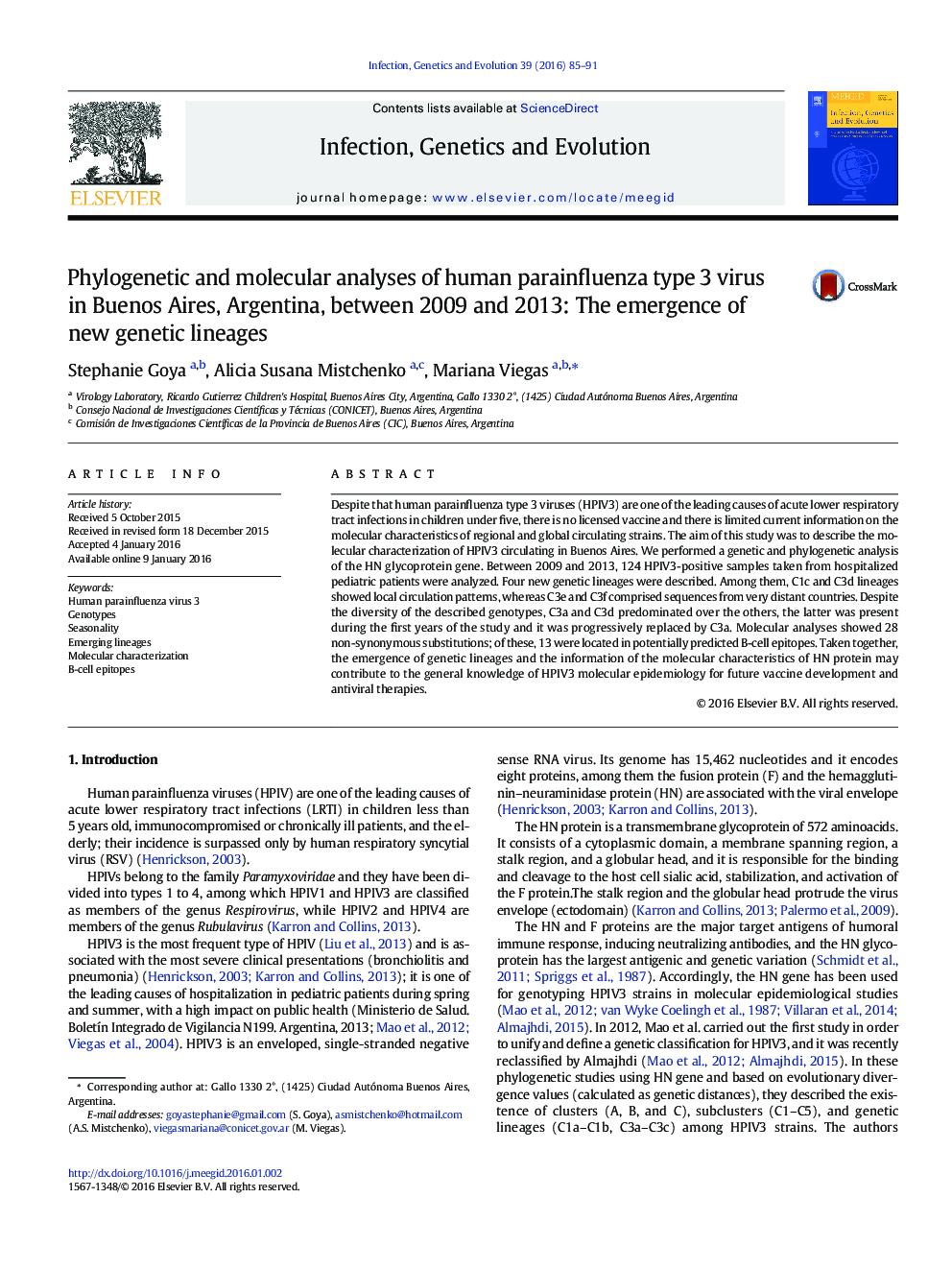| کد مقاله | کد نشریه | سال انتشار | مقاله انگلیسی | نسخه تمام متن |
|---|---|---|---|---|
| 5908708 | 1570164 | 2016 | 7 صفحه PDF | دانلود رایگان |
- HPIV3 were the second cause of acute LRTI in children <Â 2Â years old in Buenos Aires.
- We report the emergence of four genetic lineages in Buenos Aires, Argentina.
- Two of the detected genetic lineages circulated locally.
- We report cocirculation of different genetic lineages.
- We report amino acid substitutions in potential B-cell epitopes.
Despite that human parainfluenza type 3 viruses (HPIV3) are one of the leading causes of acute lower respiratory tract infections in children under five, there is no licensed vaccine and there is limited current information on the molecular characteristics of regional and global circulating strains. The aim of this study was to describe the molecular characterization of HPIV3 circulating in Buenos Aires. We performed a genetic and phylogenetic analysis of the HN glycoprotein gene. Between 2009 and 2013, 124 HPIV3-positive samples taken from hospitalized pediatric patients were analyzed. Four new genetic lineages were described. Among them, C1c and C3d lineages showed local circulation patterns, whereas C3e and C3f comprised sequences from very distant countries. Despite the diversity of the described genotypes, C3a and C3d predominated over the others, the latter was present during the first years of the study and it was progressively replaced by C3a. Molecular analyses showed 28 non-synonymous substitutions; of these, 13 were located in potentially predicted B-cell epitopes. Taken together, the emergence of genetic lineages and the information of the molecular characteristics of HN protein may contribute to the general knowledge of HPIV3 molecular epidemiology for future vaccine development and antiviral therapies.
Journal: Infection, Genetics and Evolution - Volume 39, April 2016, Pages 85-91
